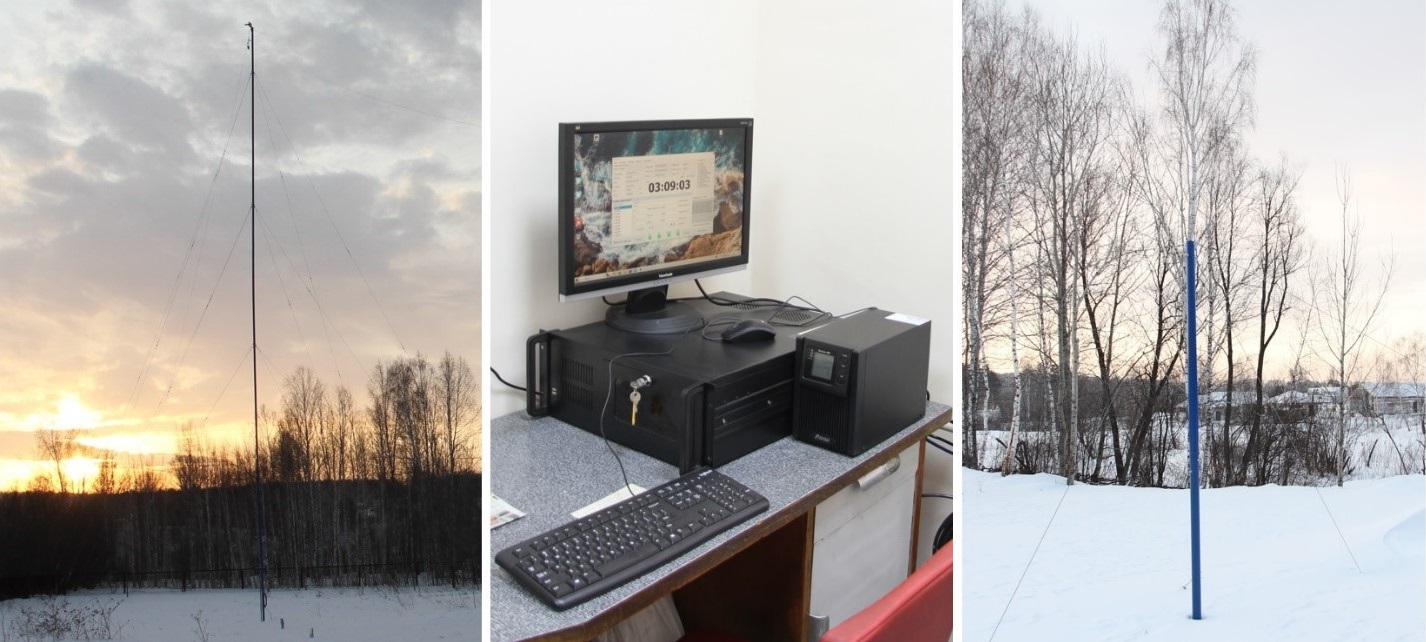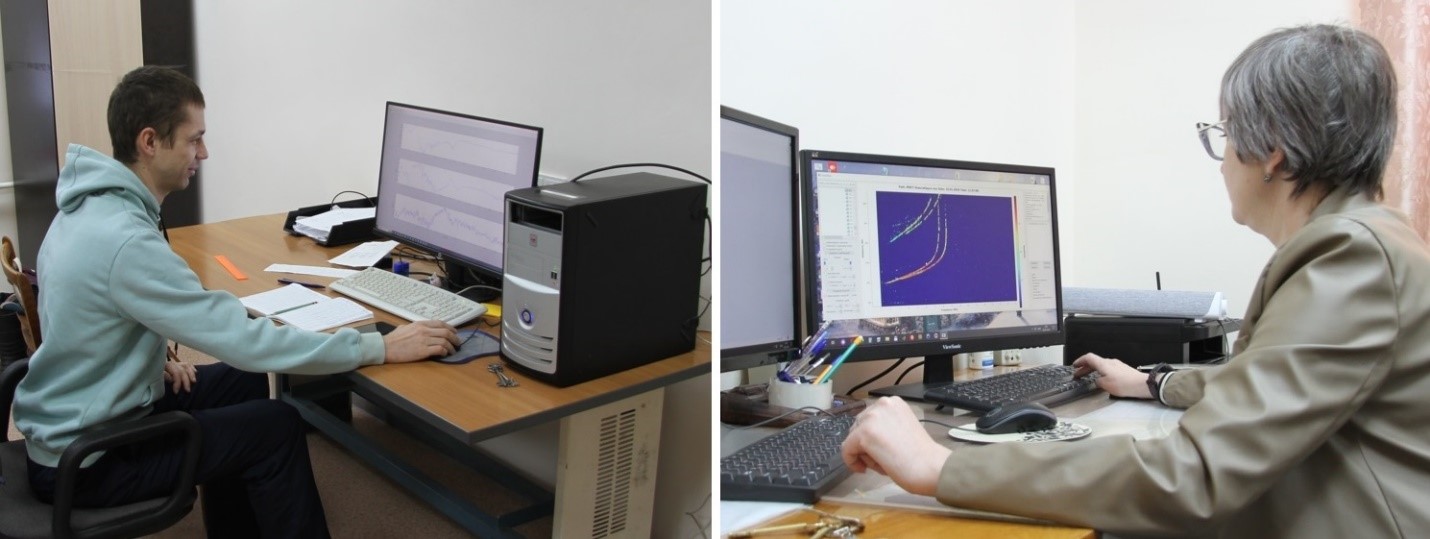The Trofimuk Institute of Petroleum Geology and Geophysics SB RAS has purchased this up-to-date equipment with funds granted as a subsidy from the federal budget providing for upgrade of the research instrumentation base within the frames of the Science and Universities national project.
The domestic-made Ionosonde-MS was designed and manufactured at the Institute of Solar-Terrestrial Physics (ISTP SB RAS, Irkutsk). The apparatus is now installed at the ionospheric station located near Akademgorodok, Novosibirsk, which has been operating since 1969 and is registered with the International Union for Radioscience URSI.
The transmitter and receiver of the new ionosonde are located in two different buildings of the laboratory (observatory) of Solar-Terrestrial Physics, IPGG SB RAS. With a distance of about 900 meters between them, it is possible to properly separate signals being emitted and reflected by the ionosphere back down to a waiting receiving station.

Antennas and receiver of the Ionosonde-MS at the ionospheric station
The apparatus enables continuous high-accuracy monitoring of the state of the ionosphere. Using the new ionosonde allows conducting vertical ionospheric sounding with a frequency of 1 min (i.e. one ionogram per minute). IPGG SB RAS also receives an inclined sounding signal from other observatories (e.g. located in Magadan and Norilsk cities, and in the village of Tory, 150 km from Irkutsk), whereas our signal is received at the Geophysical Observatory of ISTP SB RAS, Irkutsk. This complex enables analysis of the data on the state of the ionosphere over the entire northeastern part of Russia.
In real time, the hourly ionospheric data are transmitted to the West Siberian Department for Hydrometeorology and Environmental Monitoring (Novosibirsk), where the information is used to make short-, medium- and long-term forecasts of the state of the ionosphere and conditions of radio waves passage through it, as well as to IZMIRAN (Moscow) to make the “ionospheric weather” predictions.
In addition, once a day, specialists of IPGG SB RAS update the ionospheric characteristics database which is available to whom it may concern.

Members of the research team of the laboratory (observatory) of solar-terrestrial physics, IPGG SB RAS, at work: A.A. Kovalev, junior researcher, and A.Y. Belinskaya, Ph.D. (phys.-math), head of the laboratory
Published by the IPGG Press Service